Nighthawk X4S
AC2200 Tri-Band
WiFi Range Extender
Model EX7500
Getting Started
To extend the range of your WiFi network, you must
connect your Nighthawk® extender to your existing WiFi
network. You can do this in one of two ways:
• Connect with WPS. Wi-Fi Protected Setup (WPS)
lets you join a secure WiFi network without typing the
network name and password.
Note: WPS does not support WEP network security or
a hidden SSID network. If your existing WiFi network
uses WEP security or its SSID is hidden, follow the
instructions Connect With WPS.
• Connect with the NETGEAR installation assistant.
To use the NETGEAR installation assistant, you must
launch a web browser on your computer or mobile
device. For more information, see Connect With the
NETGEAR Installation Assistant on the other side of this
quick start guide.
Connect With WPS
1. Place and plug in your extender.
a. Place the extender close to your WiFi router.
b. Plug the extender into an
electrical outlet.
Wait for the Power LED to
light solid blue.
c. If the Power LED does not
light, press the WPS/Power
button until the Power LED
lights.
2. Connect to your WiFi router.
a. Press the WPS/Power button on the extender for
less than five seconds.
The WPS LED blinks blue.
Note: If you press the WPS/Power button for
more than five seconds, the extender turns o.
b. Within two minutes, press the WPS button on your
WiFi router.
When the extender connects to the router, the
WPS LED
lights solid blue.
If the Router Link LED lights blue, the
connection between the router and extender is
good. If the Router Link LED lights amber or red,
move the extender closer to the router and try
again.
c. If your WiFi router supports the 5 GHz band, repeat
Steps 2a and 2b.
Note: If your router supports the 5 GHz band,
your extender attempts to connect to the router’s
5 GHz band the first time you press the
WPS/Power button. If your extender did not
connect to the router’s 5 GHz band the first time,
repeat the WPS process.
3. Choose a location and check the signal
strength.
a. Move your extender to a new location that is about
halfway between your router and the area with a
poor router WiFi signal.
The location that you choose must be within the
range of your existing WiFi router network. See the
previous image for an example.
b. Use the Router Link LED
to help you choose
a spot where the extender-to-router connection is
optimal:
• Blue. Best connection.
• Amber. Good connection. Consider moving the
extender closer to the router.
• Red. Poor connection. Move the extender
closer to the router.
• O. No connection.
c. If you get no connection or a poor connection,
move the extender closer to your router and try
again until the Router Link LED lights blue.
4. Connect your devices.
Do
Don’t
a. Take your WiFi-enabled computer or mobile device
to the location with poor WiFi router coverage.
b. Connect your WiFi-enabled computer or mobile
device to the extended network.
Your extender uses the same WiFi network settings
as your router for its 2.4 GHz and 5 GHz extended
networks.
For example, if your extender connects to the
router’s 2.4 GHz WiFi band, your extender uses
your router’s 2.4 GHz WiFi settings for both its
networks:
• Router 2.4 GHz WiFi network name.
MyWiFiExample
• Router 5 GHz WiFi network name.
MyWiFiExample-5G
• Extended 2.4 GHz WiFi network name.
MyWiFiExample
• Extended 5 GHz WiFi network name.
MyWiFiExample
If your extender connects to the router’s 5 GHz
WiFi band, your extender uses your router’s 5 GHz
WiFi settings for both its networks:
• Router 2.4 GHz WiFi network name.
MyWiFiExample
• Router 5 GHz WiFi network name.
MyWiFiExample-5G
• Extended 2.4 GHz WiFi network name.
MyWiFiExample-5G
• Extended 5 GHz WiFi network name.
MyWiFiExample-5G
Note: Since your router and extended networks
share the same WiFi network name, only one WiFi
network name is broadcast.
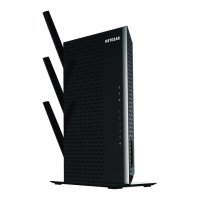


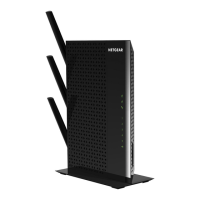
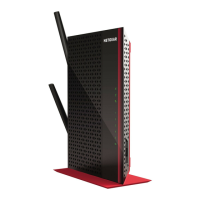
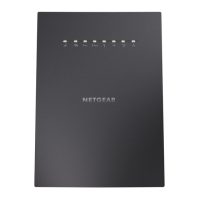

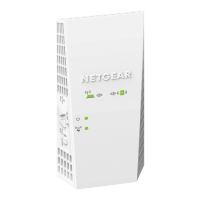
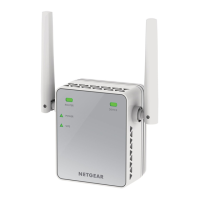
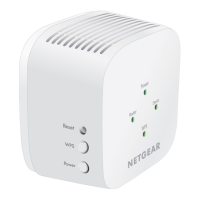

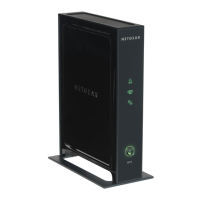
